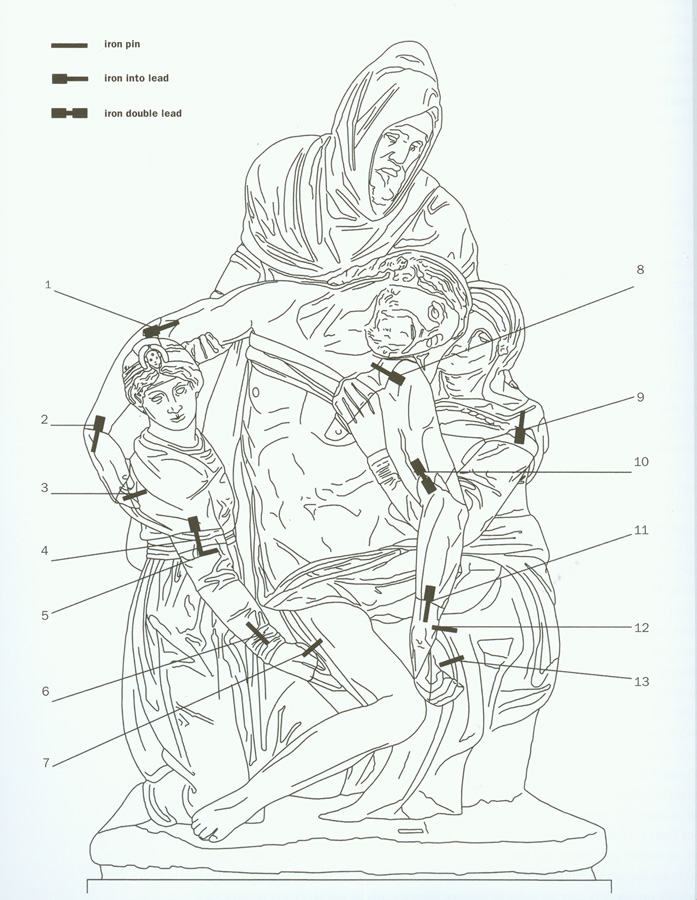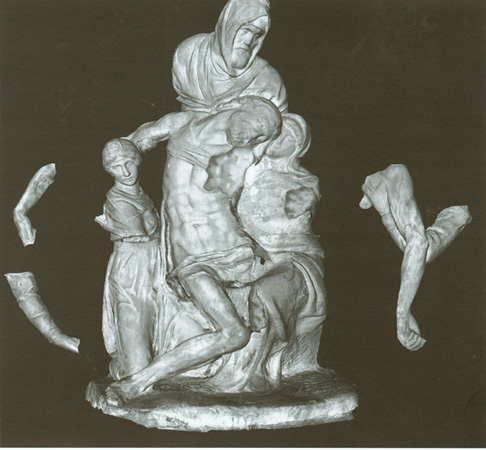|
|
Why Michelangelo Destroyed the PietaVasari gave several reasons why Michelangelo destroyed his Florentine pieta: "...Either because of defects in the marble, or because the stone was so hard | that the chisel often struck sparks, or because he was too severe a judge J of his own work and could never be content with anything he did. It is | true that few of his mature works were ever completed and that those entirely finished were productions of his youth. Such were the Bacchus, the Pieta of the Madonna della F^ebbre [in Saint Peter's], il Gigante [the David], at Florence, and the Christ Risen of the Minerva [Santa Maria sopra Minerva], which are finished to such perfection that a single grain could not be taken from them without injury. Michelangelo often said that, if he were compelled to satisfy himself, he should show little or nothing. The reason is obvious: he had attained such knowledge in art that the slightest error could not exist without his immediate dis- covery of it. But once it had been seen in public, he would never attempt to correct it, but would begin a new work, for he believed that a similar failure would not happen again. He often declared that this was the reason that the number of his finished works was so small." He gave the broken Pieta to Francesco Bandini. While it was still in Michelangelo's house, the Florentine sculptor, Tiberio Calcagni, in- quired after a long discussion why he had destroyed so admirable a per- formance. Our artist replied that he had been driven to it by Urbino, his servant, who urged him every day to finish it. Besides, a piece had broken off the arm of the Madonna. This and a vein which appeared in the marble had caused him infinite trouble and had driven him out of patience.
He would have dashed the group to fragments, if Antonio
had not advised him to give it to someone, even as it was. Tiberio
offered Antonio two hundred crowns in gold to persuade Michelangelo
to allow Tiberio to finish the group for Bandini, that the labor already
spent on it might not be lost. So Michelangelo gave them the pieces,
which they instantly carried away. These were put together by Tiberio,
and certain parts, I know not what, added. But the death of Bandini,
of Michelangelo, and of Tiberio himself, left the work unfinished
after all."
However, IMHO, as a history bluff, I and am inclined to believe what Vasari says then Wasserman. Vasari was Michelangelo's friend, student, and biographer. IMHO, Michelangelo would not go about smashing up his statue with a hammer. He could never do that to one of his creations. Instead he would use his chisels to cut the marble away. Also when he cuts away with his chisels he learns more how the marble would respond to the chisel. |

Shows locations of iron pins used to restore the statue.
